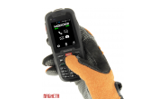
Objective:
The risk of accident is real for the resin tapper. The objective here is not to protect the worker against the accident but rather to avoid the aggravation of the consequences of an accident by alerting the emergency services as soon as possible. The Lone Worker Device is a function that can be useful for both resin tappers and forest workers.
Context:
The resin tapper often works alone in the forest. To harvest, he must scrape off the bark of the tree, which requires the use of a cutting tool. Thus, the resin tapper is not safe from an accident. For example, if a worker cuts himself in the forest or faints, how can he alert the emergency services? How to guide the rescue team to him? Many questions arise around the safety of the isolated worker.
Contacts:
Matthieu Bonnemazou
matthieu.bonnemazou@fcba.fr